There have been a few themes or categories of images that have impressed me on this trip, so far. I've been intrigued by the use of stone construction in Ireland and Scotland. Every plot of land and roadside is lined with a stone fence or wall. Many of the houses are built with stone (walls two feet thick). Of course, all of the castles are constructed with stone.
I've also been interested in the signs I've seen along the way
. Messages at crosswalks, traffic signs and even caution sign for red squirrels.
Here are some of the images that have moved me and a story about the stone walls of Ireland.
THE DRY STONE WALLS OF IRELAND
There are over a quarter of a million miles of them
by Peter Mooney
As you travel across Ireland from East to West, some changes in the landscape become apparent. The wide fields and flat bogs of the Midlands give way at the river Shannon to the rich farm lands of east Co. Galway, but these farm lands are different. Where once the boundaries between the fields were ditches and hedgerows, now they become dry stone walls. The further you travel into Co. Galway, the smaller the fields become until you reach Connemara. Here the whole landscape becomes a patchwork of tiny plots of land with the dry stone walls the thread that binds them. It is the same all along the Western seaboard from Donegal in the north to Cork and Kerry in the south
. For many visitors to Ireland, their abiding memory of the scenery is not the great sweeping seascapes or the ancient mountains shrouded in mist, but these tiny fields emerging from the stony land, surrounded by tens of thousands of miles of stone walls. They are silent witness to hundreds of years of Irish history and reminders to all of us of where we have come from.
New farming system
Many of the existing walls are not as old as you might think. Most were built after the great Famine of the 1840s when the open system of farming, known as the Rundale system, was replaced and the land redistributed. Stone walls not only defined fields but also helped to clear them . Nonetheless the tradition of dry stone wall building is still very ancient. Stone walls marked out The Ceide Fields (see Issue 81) in Co. Mayo nearly four thousand years ago. Covering nearly five square miles some of the walls are over a mile long and about 250,000 tons of stone were used in their construction
. However it is in Kerry along the Dingle Peninsula that you can see the most spectacular and beautiful example of these ancient walls. The Gallarus Oratory was built sometime between the 6th and 9th century and is the finest example of an early Christian Church in Ireland. It looks like an upturned boat and was built using a technique developed by Neolithic tomb builders - dry stone corbelling. Each stone is laid at an angle, slightly lower on the outside than the inside, so that the water runs off. Despite more than a thousand years of exposure to the Atlantic storms and without even a handful of mortar, the inside of the Church is bone dry and the structure is rock solid. In addition to the Gallarus Oratory there are literally hundreds of smaller beehive huts scattered around the Dingle Peninsula which were used by early Christian monks, and the tradition survives. At Brandon Creek only a few miles from Gallarus, where St. Brendan set out to discover America, there are the remnants of an old 19th century fisherman's cottage
. Though not as finely built as the Oratory, you can still see in its gables and walls the style and technique of the early church. More modern examples can be seen in the boundary wall of the Silent Valley Reservoir in Co. Down, which is twenty two miles long. It took eighteen years to build (1904 - 1922) and is made of locally cut granite, is eight feet tall and - as if that is not enough - it climbs over fifteen summits in the Mountains of Mourne. It must be one of the longest dry stone walls in the world, although it is not the tallest.
That honour seems to go to a wall in the Memorial Park at Islandbridge in Dublin. The Park was laid out in the late 1920s to a design by Sir Edward Lutyens to commemorate those Irish men who died in the Great War of 1914-18. The wall rises over 20 feet behind the Memorial Cross and was built by stonemasons brought from Connemara especially for the task.
Three main types
Looking at a dry stone wall it would seem to defy the laws of gravity
. Usually only one or two stones thick, they are very sturdy and can rise to a considerable height. They are quick and easy to build, having no foundations, and can be built from local materials; they require little maintenance. The style may vary from county to county depending on local tradition and the material available. In his fascinating book "Irish Stone Walls" Patrick McAfee describes three main types: Single stone walls common in Donegal and Down; Double stone walls common in the southwest; and combination walls which have a small double wall at the base on top of which a single wall is built. These appear to have been introduced to Galway by improving landlords in the 19th century. All have their advantages and disadvantages: Single walls appear particularly unstable, so sheep are not inclined to jump them; double walls provide more shelter, and combination walls give a little of everything. The large rounded boulders of the Mourne Mountains make for good strong single stone walls whereas in Dingle double walls are made with the local flat sandstone
.
Patrick McAfee also says that "some dry stone walls deserve to be listed as national treasures." There is no doubt that they are more appreciated now than in the past. Perhaps it was their association with the Famine or a past when we were all that bit poorer, but there was a time, not too distant, when dry stone walls were not held in the high regard that they are now. Sean Fitzgerald, a dry stone wall builder from Ballydavid in Co. Kerry, dates the change there to the arrival of an artist in the village of Dunquin in the early seventies. Instead of having the walls around her house built of breeze block, as was the then fashion, she wanted a traditional dry stone wall. Suddenly everyone realised what they had. Sean Fitzgerald is constantly busy now, building new walls not only on the Dingle Peninsula, but also as far away as the United States.
Dry stone walls are not merely piles of rocks. They live and change with the season. Like a good bottle of wine they improve as they mature, becoming a home for all kinds of wild animals and birds. In the Winter they glow with lichens and mosses and in the Summer they come alive with fuchsia, montbretia and many other wild flowers. If they are the thread that links those small fields of Connemara to one another, then they are also the threads that link the people to the land.
Sights, Signs and Walls of Ireland and Scotland
Monday, September 16, 2013
 Edinburgh, Scotland, United Kingdom
Edinburgh, Scotland, United Kingdom
Other Entries
-
4Three Days in Dublin
Aug 1532 days prior Dublin, Irelandphoto_camera23videocam 0comment 2
Dublin, Irelandphoto_camera23videocam 0comment 2 -
5Dingle Way - Day 1
Aug 1928 days prior Kerry, Irelandphoto_camera16videocam 0comment 4
Kerry, Irelandphoto_camera16videocam 0comment 4 -
6Dingle Way - Day 2
Aug 2027 days prior Killarney, Irelandphoto_camera20videocam 0comment 6
Killarney, Irelandphoto_camera20videocam 0comment 6 -
7Dingle Way - Day 3
Aug 2126 days prior Kerry, Irelandphoto_camera20videocam 0comment 7
Kerry, Irelandphoto_camera20videocam 0comment 7 -
8Dingle Way - Day 4
Aug 2225 days prior Kerry, Irelandphoto_camera11videocam 0comment 1
Kerry, Irelandphoto_camera11videocam 0comment 1 -
9Dingle Way - Day 5
Aug 2324 days prior Kerry, Irelandphoto_camera20videocam 0comment 0
Kerry, Irelandphoto_camera20videocam 0comment 0 -
10Dingle Way - Day 6
Aug 2423 days prior Kerry, Irelandphoto_camera11videocam 0comment 0
Kerry, Irelandphoto_camera11videocam 0comment 0 -
11Dingle Way - Day 7
Aug 2621 days prior Kerry, Irelandphoto_camera14videocam 0comment 2
Kerry, Irelandphoto_camera14videocam 0comment 2 -
12Dingle Way - Day 8
Aug 2720 days prior Castlegregory, Irelandphoto_camera18videocam 0comment 1
Castlegregory, Irelandphoto_camera18videocam 0comment 1 -
13Dingle Way - Day 9
Aug 2720 days prior Tralee, Irelandphoto_camera16videocam 0comment 4
Tralee, Irelandphoto_camera16videocam 0comment 4 -
14Ennis - Cliffs of Moher
Aug 2918 days prior Ennis, Irelandphoto_camera25videocam 0comment 3
Ennis, Irelandphoto_camera25videocam 0comment 3 -
15Sligo - Another Colorful Irish Town
Aug 3017 days prior Sligo, Irelandphoto_camera11videocam 0comment 0
Sligo, Irelandphoto_camera11videocam 0comment 0 -
16Belfast City
Sep 0115 days prior Belfast, United Kingdomphoto_camera22videocam 0comment 0
Belfast, United Kingdomphoto_camera22videocam 0comment 0 -
17Giants Causeway
Sep 0115 days prior Moyle, United Kingdomphoto_camera21videocam 0comment 0
Moyle, United Kingdomphoto_camera21videocam 0comment 0 -
18Glasgow
Sep 0214 days prior Glasgow, United Kingdomphoto_camera0videocam 0comment 0
Glasgow, United Kingdomphoto_camera0videocam 0comment 0 -
19Scotland
Sep 097 days prior Stirling, United Kingdomphoto_camera43videocam 0comment 20
Stirling, United Kingdomphoto_camera43videocam 0comment 20 -
20Ballquhidder, Gardener's Cottage Stay
Sep 106 days prior Balquhidder, United Kingdomphoto_camera16videocam 0comment 0
Balquhidder, United Kingdomphoto_camera16videocam 0comment 0 -
21Sights, Signs and Walls of Ireland and Scotland
Sep 16 Edinburgh, United Kingdomphoto_camera35videocam 0comment 6
Edinburgh, United Kingdomphoto_camera35videocam 0comment 6 -
22Krakow, Auschwitz, Pope J P ll, Salt & Love
Sep 204 days later Krakow, Polandphoto_camera30videocam 0comment 4
Krakow, Polandphoto_camera30videocam 0comment 4 -
23Warsaw and Stawiski
Sep 2610 days later Warsaw, Polandphoto_camera24videocam 0comment 1
Warsaw, Polandphoto_camera24videocam 0comment 1 -
24Prague and the Czech Republic
Oct 0317 days later Prague, Czech Republicphoto_camera20videocam 0comment 2
Prague, Czech Republicphoto_camera20videocam 0comment 2 -
25Votice, Czech Republic
Oct 0418 days later Votice, Czech Republicphoto_camera24videocam 0comment 7
Votice, Czech Republicphoto_camera24videocam 0comment 7 -
26Salzburg and the Trip South
Oct 1428 days later Salzburg, Austriaphoto_camera16videocam 0comment 0
Salzburg, Austriaphoto_camera16videocam 0comment 0 -
27One Day in Venice, We Will Be Back
Oct 1529 days later Venice, Italyphoto_camera20videocam 0comment 4
Venice, Italyphoto_camera20videocam 0comment 4 -
28Saffron Farm - Week One
Oct 2337 days later Montedinove, Italyphoto_camera19videocam 0comment 4
Montedinove, Italyphoto_camera19videocam 0comment 4 -
29Saffron Farm - Week Two
Oct 3044 days later Montedinove, Italyphoto_camera20videocam 0comment 7
Montedinove, Italyphoto_camera20videocam 0comment 7 -
30Saffron Farm - Week Three
Nov 0651 days later Montedinove, Italyphoto_camera13videocam 0comment 0
Montedinove, Italyphoto_camera13videocam 0comment 0 -
31Rome, Bologna, Verona and Venice
Nov 1358 days later Venice, Italyphoto_camera31videocam 0comment 3
Venice, Italyphoto_camera31videocam 0comment 3 -
32Barcelona, beautiful Barcelona!
Nov 2368 days later Barcelona, Spain and Canary Islandsphoto_camera28videocam 0comment 2
Barcelona, Spain and Canary Islandsphoto_camera28videocam 0comment 2 -
33Mediterranean Cruise and Ports-of-Call
Nov 2368 days later Barcelona, Spain and Canary Islandsphoto_camera21videocam 0comment 3
Barcelona, Spain and Canary Islandsphoto_camera21videocam 0comment 3 -
34Torremolinos, Alhambra and La Mancha
Dec 0782 days later Torremolinos, Spain and Canary Islandsphoto_camera38videocam 0comment 2
Torremolinos, Spain and Canary Islandsphoto_camera38videocam 0comment 2 -
35Faro, Portugal House Sitting
Dec 1691 days later Faro, Portugalphoto_camera19videocam 0comment 2
Faro, Portugalphoto_camera19videocam 0comment 2 -
36Morocco for 6 Days
Jan 04110 days later Fes, Moroccophoto_camera29videocam 0comment 0
Fes, Moroccophoto_camera29videocam 0comment 0 -
37Greece: Athens, Delphi, Olympia and Hydra Island
Jan 07113 days later Athens, Greecephoto_camera55videocam 0comment 1
Athens, Greecephoto_camera55videocam 0comment 1 -
38Oman: Wonderful Visit with Michelle and Randy
Jan 21127 days later Muscat, Omanphoto_camera45videocam 0comment 12
Muscat, Omanphoto_camera45videocam 0comment 12 -
39Cambodia: Yoga Retreat and the Super Bowl
Jan 30136 days later Siem Reap, Cambodiaphoto_camera40videocam 0comment 15
Siem Reap, Cambodiaphoto_camera40videocam 0comment 15
Comments
2025-05-22
Comment code: Ask author if the code is blank

 Edinburgh, Scotland, United Kingdom
Edinburgh, Scotland, United Kingdom
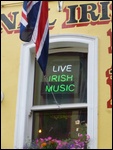

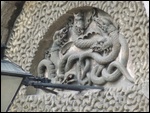

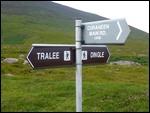












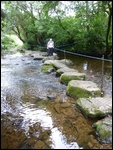
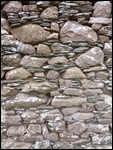
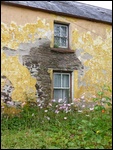
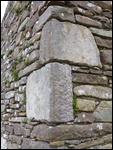
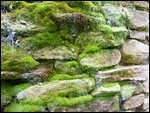
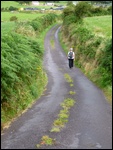
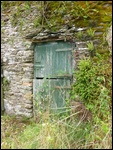
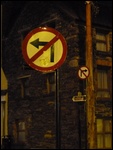
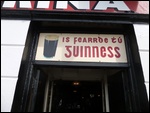
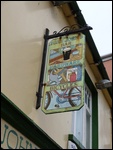
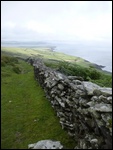
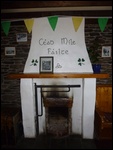
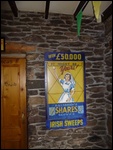
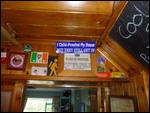
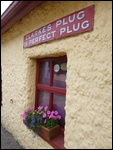
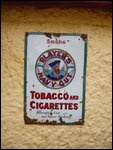
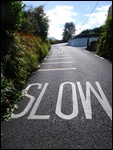
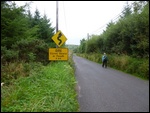
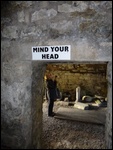
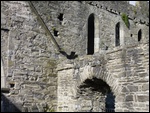


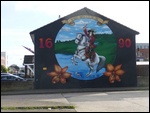

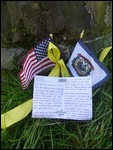
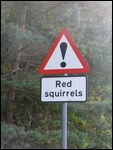

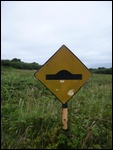
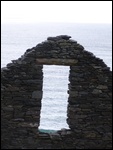
Sheila
2013-09-19
Wonderful post -- the images remind me of several books you might enjoy on the trip Silent Spring by Rachel Carson and A Sand Almanac by Aldo Leopold.
Michael McMahon
2013-09-19
Red Squirrels! Bold documentation.
Cathy
2013-09-19
Great photos here......I love the signs, especially "mind your head." Sounds like a mom giving some sound advice!